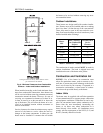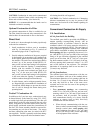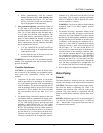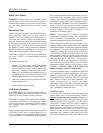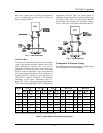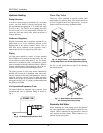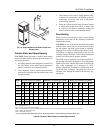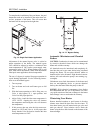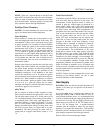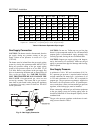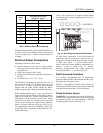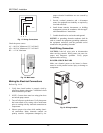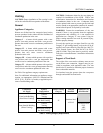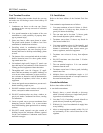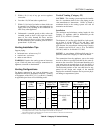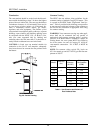
SECTION C: Installation
17
NOTE: There are 2 separate drains on the MVB that
must BOTH be drained to protect the heat exchanger.
These are both accessible by removing the lower front
door from the heater. Drain any piping of all water that
may experience below-freezing temperatures.
Pool/Spa Water Chemistry
NOTICE: Chemical imbalance can cause severe dam-
age to your heater and associated equipment.
Water Hardness
Water hardness is mainly due to the presence of cal-
cium and magnesium salts dissolved in the water. The
concentration of these salts is expressed in mg/l, ppm
or grains per gallon, as a measure of relative hardness
of water. Grains per gallon is the common reference
measurement used in the U.S. water heater industry.
Hardness expressed as mg/L or ppm may be divided by
17.1 to convert to grains per gallon. Water may be
classified as very soft, slightly hard, moderately hard or
hard based on its hardness number. The salts in water
will precipitate out when the water is heated and will
cause accelerated lime and scale accumulation on a
heat transfer surface.
Raypak water heaters can operate lime/scale-free using
potable water with a hardness not exceeding 20 grains
per gallon. Proper operation is achieved by setting the
temperature rise/water flow per the guidelines in the
installation instructions. If the hardness of the water
exceeds the maximum level of 20 grains per gallon
special measures must be taken to adjust flow and tem-
perature rise. Water should be softened to a hardness
level no lower than 5 grains per gallon. Water softened
as low as 0 to 1 grain per gallon may be under-
saturated with respect to calcium carbonate resulting in
water that is aggressive and corrosive.
pH of Water
pH is a measure of relative acidity, neutrality or alka-
linity. Dissolved minerals and gases affect water’s pH.
The pH scale ranges from 0 to 14. Water with a pH of
7.0 is considered neutral. Water with a pH lower than 7
is considered acidic. Water with a pH higher than 7 is
considered alkaline. A neutral pH (around 7) is desir-
able for most potable water applications. Corrosion
damage and water heater failures resulting from water
pH levels of lower than 6 or higher than 8 are non-
warrantable. The ideal pH range for water used in a
storage tank or a copper water heater system is 7.2 to
7.8.
Total Dissolved Solids
Total dissolved solids (TDS) is the measure of all min-
erals and solids that are dissolved in the water. The
concentration of total dissolved solids is usually ex-
pressed in parts per million (ppm) as measured in a
water sample. Water with a high TDS concentration
will greatly accelerate lime and scale formation in the
hot water system. Most high TDS concentrations will
precipitate out of the water when heated. This can gen-
erate a scale accumulation on the heat transfer surface
that will greatly reduce the service life of a water
heater. This scale accumulation can also impede ade-
quate flow of water and may totally block the water
passages in the tubes of the heat exchanger. A heat
exchanger that is damaged or blocked by lime/scale
accumulation must be replaced. Failure of a water
heater due to lime scale build up on the heating surface
is non-warrantable. The manufacturer of the water
heater has no control of the water quality, especially
the TDS levels in your system. Total dissolved solids
in excess of 2,500 ppm will accelerate lime and scale
formation in the heat exchanger. Heat exchanger fail-
ure due to total dissolved solids in excess of 2,500 ppm
is a non-warrantable condition. Raypak offers basic
temperature guidelines for operation of a potable water
heater on normal to moderate levels of hardness and
solids but levels of hardness and total dissolved solids
beyond normal limits for operation will require special
setup and operation.
NOTICE: Failure of a heat exchanger due to lime scale
build-up on the heating surface, low pH or other
chemical imbalance is non-warrantable.
Gas Supply
DANGER: Make sure the gas on which the heater will
operate is the same type as specified on the heater’s
rating plate.
Gas piping must have a sediment trap ahead of the
heater gas controls, and a manual shut-off valve lo-
cated outside the heater jacket. It is recommended that
a union be installed in the gas supply piping adjacent to
the heater for servicing. The gas supply pressure to the
heater must not exceed 10.5 in. WC for Natural Gas or
13.0 in. WC for Propane Gas. A pounds-to-inches
regulator must be installed to reduce the gas supply
pressure if it is higher than noted above. This regulator
should be placed a minimum distance of 10 times the
pipe diameter upstream of the heater gas controls.
Refer to Table H for maximum pipe lengths.



